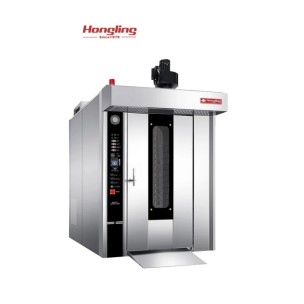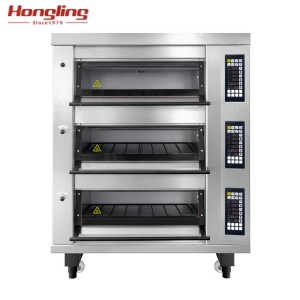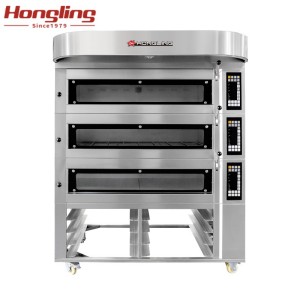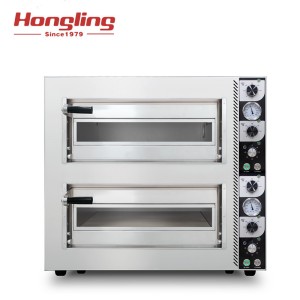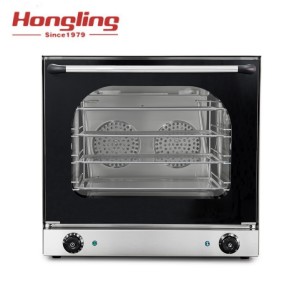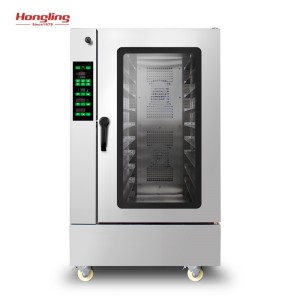–Я—П—В—М –Ї–ї—О—З–µ–≤—Л—Е —А–∞–Ј–ї–Є—З–Є–є –Љ–µ–ґ–і—Г –Ї–Њ–Љ–Љ–µ—А—З–µ—Б–Ї–Є–Љ–Є –њ–µ—З–Є –Є —В—А–∞–і–Є—Ж–Є–Њ–љ–љ—Л—Е –і–Њ–Љ–∞—И–љ–Є—Е –њ–µ—З–µ–є
–Ъ–Њ–Љ–Љ–µ—А—З–µ—Б–Ї–Є–µ –њ–µ—З–Є –Є —В—А–∞–і–Є—Ж–Є–Њ–љ–љ—Л–µ –і–Њ–Љ–∞—И–љ–Є–µ –њ–µ—З–Є —Б–ї—Г–ґ–∞—В —Ж–µ–ї–Є –≤—Л–њ–µ—З–Ї–Є –Є –њ—А–Є–≥–Њ—В–Њ–≤–ї–µ–љ–Є—П –њ–Є—Й–Є, –љ–Њ –Њ–љ–Є –њ—А–µ–і–љ–∞–Ј–љ–∞—З–µ–љ—Л –і–ї—П —Б–Њ–≤–µ—А—И–µ–љ–љ–Њ —А–∞–Ј–љ—Л—Е —Б—А–µ–і –Є —В—А–µ–±–Њ–≤–∞–љ–Є–є –Т–Њ—В –њ—П—В—М –Њ—Б–љ–Њ–≤–љ—Л—Е —А–∞–Ј–ї–Є—З–Є–є –Љ–µ–ґ–і—Г –љ–Є–Љ–Є:
1 –°—Ж–µ–љ–∞—А–Є–Є –Є—Б–њ–Њ–ї—М–Ј–Њ–≤–∞–љ–Є—П: –≤—Л—Б–Њ–Ї–∞—П –Є–љ—В–µ–љ—Б–Є–≤–љ–Њ—Б—В—М –њ—А–Њ—В–Є–≤ –µ–ґ–µ–і–љ–µ–≤–љ–Њ–є –і–Њ–Љ–∞—И–љ–µ–є –Ї—Г—Е–љ–Є
- –Ъ–Њ–Љ–Љ–µ—А—З–µ—Б–Ї–Є–µ –њ–µ—З–Є: –Я—А–µ–і–љ–∞–Ј–љ–∞—З–µ–љ –і–ї—П —Б—А–µ–і—Л –≤—Л—Б–Њ–Ї–Њ–≥–Њ —Б–њ—А–Њ—Б–∞, —В–∞–Ї–Є—Е –Ї–∞–Ї —А–µ—Б—В–Њ—А–∞–љ—Л, –њ–µ–Ї–∞—А–љ–Є –Є –њ—А–Њ–Є–Ј–≤–Њ–і—Б—В–≤–Њ –њ—А–Њ–і—Г–Ї—В–Њ–≤ –њ–Є—В–∞–љ–Є—П –Ю–љ–Є –Љ–Њ–≥—Г—В –Њ–±—А–∞–±–∞—В—Л–≤–∞—В—М –љ–µ–њ—А–µ—А—Л–≤–љ–Њ–µ, –і–Њ–ї–≥–Њ—Б—А–Њ—З–љ–Њ–µ –Є—Б–њ–Њ–ї—М–Ј–Њ–≤–∞–љ–Є–µ –Є —З–∞—Б—В—Л–µ —А–∞–±–Њ—В—Л
- –Ф–Њ–Љ–∞—И–љ–Є–µ –њ–µ—З–Є: –Я–Њ–і—Е–Њ–і–Є—В –і–ї—П –њ–Њ–≤—Б–µ–і–љ–µ–≤–љ–Њ–є –і–Њ–Љ–∞—И–љ–µ–є –Ї—Г—Е–љ–Є, —Б –±–Њ–ї–µ–µ –љ–Є–Ј–Ї–Њ–є —З–∞—Б—В–Њ—В–Њ–є –Є—Б–њ–Њ–ї—М–Ј–Њ–≤–∞–љ–Є—П –Є —Б–њ–Њ—Б–Њ–±–љ–Њ—Б—В—М—О –Њ–±—А–∞–±–∞—В—Л–≤–∞—В—М –Љ–µ–љ—М—И–Є–µ –Ј–∞–і–∞—З–Є –і–ї—П –≤—Л–њ–µ—З–Ї–Є
2 –µ–Љ–Ї–Њ—Б—В—М –Є —А–∞–Ј–Љ–µ—А
- –Ъ–Њ–Љ–Љ–µ—А—З–µ—Б–Ї–Є–µ –њ–µ—З–Є: –Я—А–µ–і–ї–Њ–ґ–Є—В–µ –±–Њ–ї—М—И–Є–µ –≤–љ—Г—В—А–µ–љ–љ–Є–µ –≤–Њ–Ј–Љ–Њ–ґ–љ–Њ—Б—В–Є –Є —З–∞—Б—В–Њ –Њ—Б–љ–∞—Й–µ–љ—Л –љ–µ—Б–Ї–Њ–ї—М–Ї–Є–Љ–Є —Б–ї–Њ—П–Љ–Є —Б—В–Њ–µ–Ї, —З—В–Њ–±—Л –Љ–∞–Ї—Б–Є–Љ–Є–Ј–Є—А–Њ–≤–∞—В—М —Н—Д—Д–µ–Ї—В–Є–≤–љ–Њ—Б—В—М –Э–∞–њ—А–Є–Љ–µ—А, –Њ–љ–Є –Љ–Њ–≥—Г—В –≤—Л–њ–µ–Ї–∞—В—М –і–µ—Б—П—В–Ї–Є —Е–ї–µ–±–љ—Л—Е —Е–ї–µ–±–Њ–≤ –Є–ї–Є –љ–µ—Б–Ї–Њ–ї—М–Ї–Є—Е –ї–Њ—В–Њ–Ї —Б –њ–Є—Ж—Ж–µ–є –Њ–і–љ–Њ–≤—А–µ–Љ–µ–љ–љ–Њ
- –Ф–Њ–Љ–∞—И–љ–Є–µ –њ–µ—З–Є: –Ь–µ–љ—М—И–µ –њ–Њ —А–∞–Ј–Љ–µ—А—Г, –њ—А–µ–і–љ–∞–Ј–љ–∞—З–µ–љ–љ—Л–µ –і–ї—П –Њ–≥—А–∞–љ–Є—З–µ–љ–љ—Л—Е –Ї—Г—Е–Њ–љ–љ—Л—Е –њ—А–Њ—Б—В—А–∞–љ—Б—В–≤ –Є, –Ї–∞–Ї –њ—А–∞–≤–Є–ї–Њ, –Њ–±—А–∞–±–∞—В—Л–≤–∞—О—В –Љ–µ–љ—М—И–Є–µ –Ї–Њ–ї–Є—З–µ—Б—В–≤–∞, –Є–і–µ–∞–ї—М–љ–Њ –њ–Њ–і—Е–Њ–і–Є—В –і–ї—П –њ—А–Є–≥–Њ—В–Њ–≤–ї–µ–љ–Є—П —Б–µ–Љ–µ–є–љ–Њ–≥–Њ –Љ–∞—Б—И—В–∞–±–∞
3 –Ю—Б–Њ–±–µ–љ–љ–Њ—Б—В–Є –Є —Н–ї–µ–Љ–µ–љ—В—Л —Г–њ—А–∞–≤–ї–µ–љ–Є—П
- –Ъ–Њ–Љ–Љ–µ—А—З–µ—Б–Ї–Є–µ –њ–µ—З–Є: –Ю–±–Њ—А—Г–і–Њ–≤–∞–љ —Б –њ–Њ–Љ–Њ—Й—М—О —Б–Є—Б—В–µ–Љ —Г–њ—А–∞–≤–ї–µ–љ–Є—П –њ—А–Њ—Д–µ—Б—Б–Є–Њ–љ–∞–ї—М–љ—Л–Љ –Ї–ї–∞—Б—Б–Њ–Љ, –њ—А–µ–і–ї–∞–≥–∞—П —А–∞—Б—И–Є—А–µ–љ–љ—Л–µ —Д—Г–љ–Ї—Ж–Є–Є –Є –≤—Л—Б–Њ–Ї—Г—О —В–Њ—З–љ–Њ—Б—В—М –Ю–љ–Є –Љ–Њ–≥—Г—В –≤–Ї–ї—О—З–∞—В—М –љ–µ–Ј–∞–≤–Є—Б–Є–Љ—Л–µ —В–µ–Љ–њ–µ—А–∞—В—Г—А–љ—Л–µ —Н–ї–µ–Љ–µ–љ—В—Л —Г–њ—А–∞–≤–ї–µ–љ–Є—П —В–µ–Љ–њ–µ—А–∞—В—Г—А–Њ–є, –Є–љ—К–µ–Ї—Ж–Є—О –њ–∞—А–∞ –Є–ї–Є —А–µ–≥—Г–ї–Є—А—Г–µ–Љ—Л–µ —Б–Є—Б—В–µ–Љ—Л —Ж–Є—А–Ї—Г–ї—П—Ж–Є–Є –≤–Њ–Ј–і—Г—Е–∞ –і–ї—П —Г–і–Њ–≤–ї–µ—В–≤–Њ—А–µ–љ–Є—П —Б–ї–Њ–ґ–љ—Л—Е –њ–Њ—В—А–µ–±–љ–Њ—Б—В–µ–є –≤ –≤—Л–њ–µ—З–Ї–µ
- –Ф–Њ–Љ–∞—И–љ–Є–µ –њ–µ—З–Є: –Ю—В–љ–Њ—Б–Є—В–µ–ї—М–љ–Њ –њ—А–Њ—Б—В –≤ —Д—Г–љ–Ї—Ж–Є–Њ–љ–∞–ї—М–љ–Њ—Б—В–Є, —Б —Г–і–Њ–±–љ—Л–Љ–Є —Н–ї–µ–Љ–µ–љ—В–∞–Љ–Є —Г–њ—А–∞–≤–ї–µ–љ–Є—П, –≤ –њ–µ—А–≤—Г—О –Њ—З–µ—А–µ–і—М –Њ–±—Б–ї—Г–ґ–Є–≤–∞–љ–Є–µ –љ–∞—З–Є–љ–∞—О—Й–Є—Е –Є –Њ—Б–љ–Њ–≤–љ—Л—Е —В—А–µ–±–Њ–≤–∞–љ–Є–є –Ї –і–Њ–Љ–∞—И–љ–µ–Љ—Г –њ—А–Є–≥–Њ—В–Њ–≤–ї–µ–љ–Є—О –њ–Є—Й–Є
4 –Ь–∞—В–µ—А–Є–∞–ї—Л –Є –і–Њ–ї–≥–Њ–≤–µ—З–љ–Њ—Б—В—М
- –Ъ–Њ–Љ–Љ–µ—А—З–µ—Б–Ї–Є–µ –њ–µ—З–Є: –Я–Њ—Б—В—А–Њ–µ–љ —Б –≤—Л—Б–Њ–Ї–Њ–њ—А–Њ—З–љ—Л–Љ–Є –Љ–∞—В–µ—А–Є–∞–ї–∞–Љ–Є, —В–∞–Ї–Є–Љ–Є –Ї–∞–Ї –љ–µ—А–ґ–∞–≤–µ—О—Й–∞—П —Б—В–∞–ї—М, –і–ї—П –≤—Л–і–µ—А–ґ–∞–љ–Є—П –≤—Л—Б–Њ–Ї–Є—Е —В–µ–Љ–њ–µ—А–∞—В—Г—А, —Б–Љ–∞–Ј–Ї–Є –Є –і–ї–Є—В–µ–ї—М–љ–Њ–є —А–∞–±–Њ—В—Л –Ю–љ–Є —В–∞–Ї–ґ–µ –њ—А–µ–і–љ–∞–Ј–љ–∞—З–µ–љ—Л –і–ї—П –ї–µ–≥–Ї–Њ–є –Њ—З–Є—Б—В–Ї–Є –Є —В–µ—Е–љ–Є—З–µ—Б–Ї–Њ–≥–Њ –Њ–±—Б–ї—Г–ґ–Є–≤–∞–љ–Є—П
- –Ф–Њ–Љ–∞—И–љ–Є–µ –њ–µ—З–Є: –Ш—Б–њ–Њ–ї—М–Ј—Г–є—В–µ –±–Њ–ї–µ–µ –ї–µ–≥–Ї–Є–µ –Љ–∞—В–µ—А–Є–∞–ї—Л, —В–∞–Ї–Є–µ –Ї–∞–Ї –њ–ї–∞—Б—В–Є–Ї–Њ–≤—Л–µ –Є –ї–µ–≥–Ї–Є–µ —Б–њ–ї–∞–≤—Л, –њ—А–µ–і–ї–∞–≥–∞—П –і–Њ—Б—В–Њ–є–љ—Г—О –і–Њ–ї–≥–Њ–≤–µ—З–љ–Њ—Б—В—М –і–ї—П —Б–ї—Г—З–∞–є–љ–Њ–≥–Њ –Є—Б–њ–Њ–ї—М–Ј–Њ–≤–∞–љ–Є—П –њ–Њ –±–Њ–ї–µ–µ –љ–Є–Ј–Ї–Њ–є —Ж–µ–љ–µ
5 –°–Ї–Њ—А–Њ—Б—В—М –љ–∞–≥—А–µ–≤–∞ –Є –њ—А–Њ–Є–Ј–≤–Њ–і–Є—В–µ–ї—М–љ–Њ—Б—В—М
- –Ъ–Њ–Љ–Љ–µ—А—З–µ—Б–Ї–Є–µ –њ–µ—З–Є: –Я—А–Є–љ–Є–Љ–∞–є—В–µ –±–Њ–ї–µ–µ –≤—Л—Б–Њ–Ї—Г—О –љ–∞–≥—А–µ–≤–∞—В–µ–ї—М–љ—Г—О –Љ–Њ—Й–љ–Њ—Б—В—М –Є –±–Њ–ї–µ–µ –±—Л—Б—В—А–Њ–µ –≤—А–µ–Љ—П –њ—А–µ–і–≤–∞—А–Є—В–µ–ї—М–љ–Њ–≥–Њ –љ–∞–≥—А–µ–≤–∞, –±—Л—Б—В—А–Њ –і–Њ—Б—В–Є–≥–∞—П –Є –њ–Њ–і–і–µ—А–ґ–∞–љ–Є—П –Ј–∞–і–∞–љ–љ–Њ–є —В–µ–Љ–њ–µ—А–∞—В—Г—А—Л, –Є–і–µ–∞–ї—М–љ–Њ –њ–Њ–і—Е–Њ–і–Є—В –і–ї—П –Њ–ґ–Є–≤–ї–µ–љ–љ—Л—Е –Ї—Г—Е–Њ–љ—М
- –Ф–Њ–Љ–∞—И–љ–Є–µ –њ–µ—З–Є: –Ш–Љ–µ—В—М –±–Њ–ї–µ–µ –љ–Є–Ј–Ї—Г—О –љ–∞–≥—А–µ–≤–∞—В–µ–ї—М–љ—Г—О –Љ–Њ—Й–љ–Њ—Б—В—М –Є –±–Њ–ї–µ–µ –і–ї–Є—В–µ–ї—М–љ–Њ–µ –≤—А–µ–Љ—П –њ—А–µ–і–≤–∞—А–Є—В–µ–ї—М–љ–Њ–≥–Њ –љ–∞–≥—А–µ–≤–∞, –љ–Њ –Њ–љ–Є –±–Њ–ї–µ–µ —Н–љ–µ—А–≥–Њ—Н—Д—Д–µ–Ї—В–Є–≤–љ—Л, —З—В–Њ –і–µ–ї–∞–µ—В –Є—Е –њ–Њ–і—Е–Њ–і—П—Й–Є–Љ–Є –і–ї—П —Б–ї—Г—З–∞–є–љ–Њ–≥–Њ –Є—Б–њ–Њ–ї—М–Ј–Њ–≤–∞–љ–Є—П –Є –Љ–µ–ї–Ї–Њ–Љ–∞—Б—И—В–∞–±–љ–Њ–≥–Њ –њ—А–Є–≥–Њ—В–Њ–≤–ї–µ–љ–Є—П
–Ч–∞–Ї–ї—О—З–µ–љ–Є–µ
–Ю—Б–љ–Њ–≤–љ—Л–µ —А–∞–Ј–ї–Є—З–Є—П –Љ–µ–ґ–і—Г –Ї–Њ–Љ–Љ–µ—А—З–µ—Б–Ї–Є–Љ–Є –Є –і–Њ–Љ–∞—И–љ–Є–Љ–Є –њ–µ—З–Є –Ј–∞–Ї–ї—О—З–∞—О—В—Б—П –≤ —В—А–µ–±–Њ–≤–∞–љ–Є—П—Е –Є—Б–њ–Њ–ї—М–Ј–Њ–≤–∞–љ–Є—П –Є —Д—Г–љ–Ї—Ж–Є–Њ–љ–∞–ї—М–љ—Л—Е —Ж–µ–ї—П—Е –Ъ–Њ–Љ–Љ–µ—А—З–µ—Б–Ї–Є–µ –њ–µ—З–Є –њ—А–Є–Њ—А–Є—В–µ—В —Н—Д—Д–µ–Ї—В–Є–≤–љ–Њ—Б—В–Є, –і–Њ–ї–≥–Њ–≤–µ—З–љ–Њ—Б—В–Є –Є —Г–љ–Є–≤–µ—А—Б–∞–ї—М–љ–Њ—Б—В–Є –і–ї—П —Г–і–Њ–≤–ї–µ—В–≤–Њ—А–µ–љ–Є—П —В—А–µ–±–Њ–≤–∞–љ–Є–є –њ—А–Њ—Д–µ—Б—Б–Є–Њ–љ–∞–ї—М–љ—Л—Е –Ї—Г—Е–Њ–љ—М, –≤ —В–Њ –≤—А–µ–Љ—П –Ї–∞–Ї –і–Њ–Љ–∞—И–љ–Є–µ –њ–µ—З–Є —Б–Њ—Б—А–µ–і–Њ—В–Њ—З–µ–љ—Л –љ–∞ —Г–і–Њ–±—Б—В–≤–µ, –њ—А–∞–Ї—В–Є—З–µ–љ–Є–Є –Є –і–Њ—Б—В—Г–њ–љ–Њ—Б—В–Є
–Х—Б–ї–Є –≤—Л —А–∞—Б—Б–Љ–∞—В—А–Є–≤–∞–µ—В–µ –Њ–±–Њ—А—Г–і–Њ–≤–∞–љ–Є–µ –і–ї—П —Б–≤–Њ–µ–≥–Њ –њ–Є—Й–µ–≤–Њ–≥–Њ –±–Є–Ј–љ–µ—Б–∞, –Ї–Њ–Љ–Љ–µ—А—З–µ—Б–Ї–∞—П –њ–µ—З—М - –ї—Г—З—И–Є–є –≤—Л–±–Њ—А –Ф–ї—П –њ–Њ–ї—Г—З–µ–љ–Є—П –і–Њ–њ–Њ–ї–љ–Є—В–µ–ї—М–љ–Њ–є –Є–љ—Д–Њ—А–Љ–∞—Ж–Є–Є –Є–ї–Є —Н–Ї—Б–њ–µ—А—В–љ—Л—Е —Б–Њ–≤–µ—В–Њ–≤, –љ–µ —Б—В–µ—Б–љ—П–є—В–µ—Б—М –Њ–±—А–∞—Й–∞—В—М—Б—П –Ї –љ–∞–Љ!
–°—Г—Й–µ—Б—В–≤—Г–µ—В –Љ–љ–Њ–ґ–µ—Б—В–≤–Њ —В–Є–њ–Њ–≤ –Ї–Њ–Љ–Љ–µ—А—З–µ—Б–Ї–Є—Е –њ–µ—З–Є, –Ї–Њ—В–Њ—А—Л–µ –Љ–Њ–ґ–љ–Њ —А–∞–Ј–і–µ–ї–Є—В—М –љ–∞ —Б–ї–µ–і—Г—О—Й–Є–µ –Ї–∞—В–µ–≥–Њ—А–Є–Є –≤ —Б–Њ–Њ—В–≤–µ—В—Б—В–≤–Є–Є —Б –Є—Е —Д—Г–љ–Ї—Ж–Є—П–Љ–Є: –Ї–Њ–љ–≤–µ–Ї—Ж–Є–Њ–љ–љ—Л–µ –њ–µ—З–Є, –њ–Є—Ж—Ж—Л, —А–Њ—В–Њ—А–љ—Л–µ –њ–µ—З–Є —Б—В–Њ–є–Ї–Є, –Ї–Њ–Љ–±–Є–љ–Є—А–Њ–≤–∞–љ–љ—Л–µ –њ–∞—А–Њ–≤—Л–µ –њ–µ—З–Є, –Ї–Њ–љ–≤–µ–є–µ—А–љ—Л–µ –њ–µ—З–Є, –≥–Є–±—А–Є–і–љ—Л–µ –њ–µ—З–Є –Э–∞—И–∞ Hongling Factory –Љ–Њ–ґ–µ—В –њ—А–Њ–Є–Ј–≤–Њ–і–Є—В—М –≤—Б–µ–≤–Њ–Ј–Љ–Њ–ґ–љ—Л–µ –њ–µ—З–Є.
